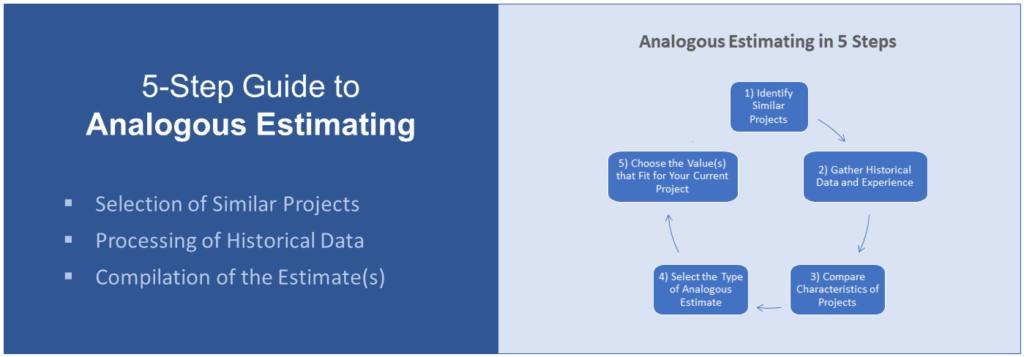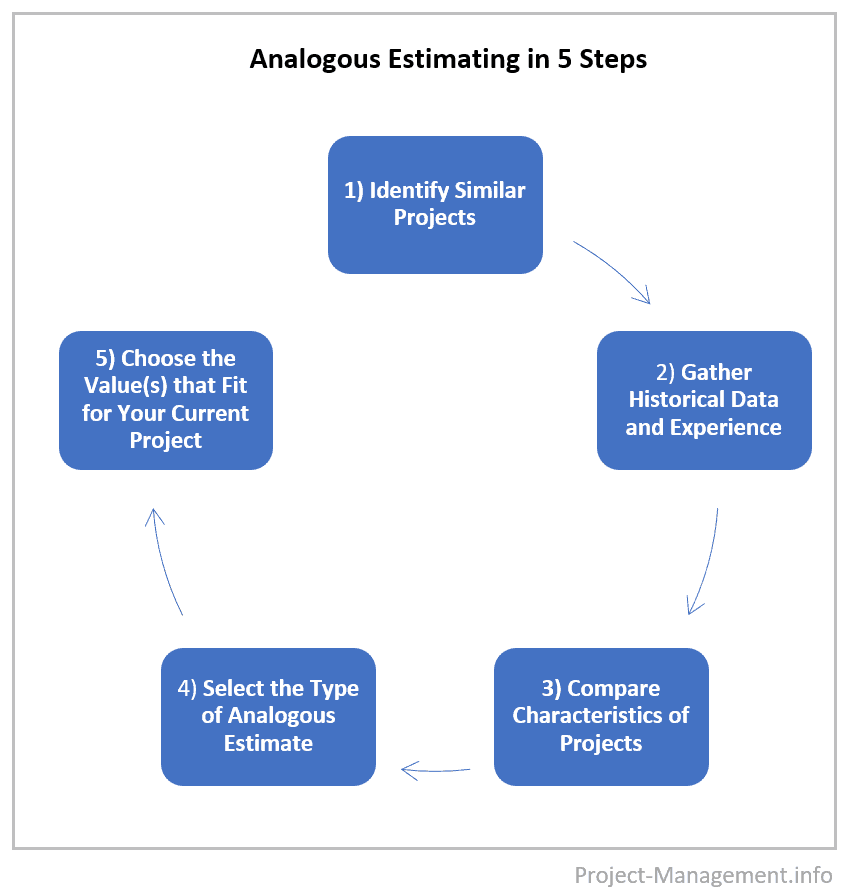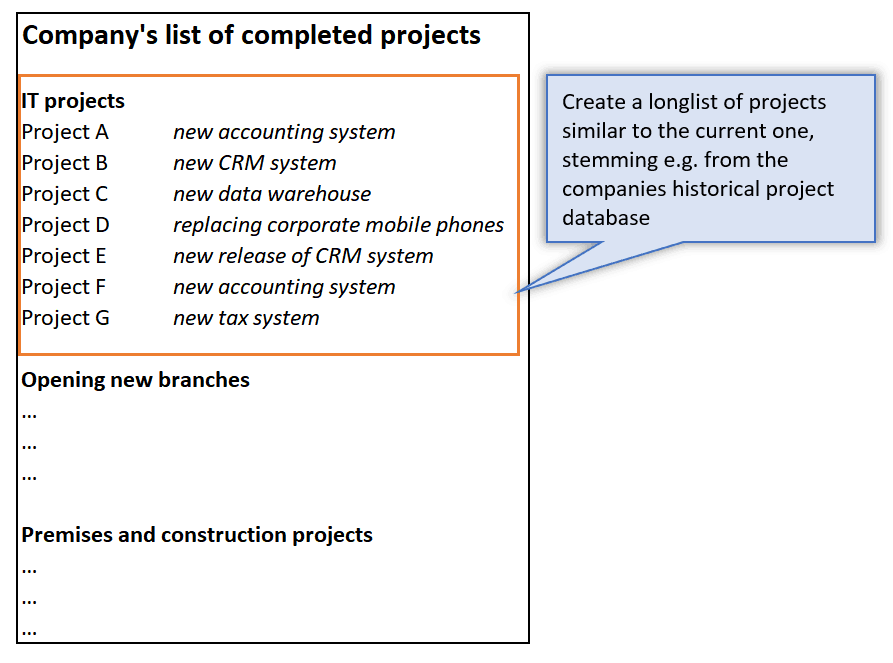Analogous estimating is a common technique in project management to determine cost, schedule or resource estimates. It is often used in situations where a rough estimate meets the needs of the stakeholders or at a time when not many details are known about a project.
Applying the technique involves the selection of similar projects, the processing of historical data and compilation of the estimate(s). These areas are covered in this 5-step guide to analogous estimating.
If you need more background on the definition or types of analogous estimating, read this comprehensive introduction where we also discuss its pros and cons.
Guide to Analogous Estimating (in 5 steps)
You can follow these 5 steps, or some of them, to come up with an analogous estimate. You will need a list of historical projects as well as details on their actual cost, duration and resource requirements. Producing analogous estimates should not take too much (compared to other estimation techniques). However, this is subject to the requirements and complexity of the project as well as the availability, granularity and quality of the historical data.
1) Identify Similar Projects
The first step is to identify projects or types of work that are similar to the current endeavor. Some companies have databases where they store data on historical projects, including their scope, complexity, efforts and time needed for their completion. These can be a great data source for analogous estimating.
Alternatively, you can rely on your or your team’s own experience or identify subject matter experts who have worked on similar projects.
If you find a number of projects, you can start with a longlist that will be filtered in steps 3 and 5. Make sure that you select projects that are somewhat similar to your current project. This will help ensure comparability. In a subsequent step, you will apply further criteria to select that or those project(s) that are the closest to your current one’s characteristics.
2) Gather Historical Data and Experience
Once you have found similar projects or experts, you will have to gather the relevant data. A data set for analogous estimations typically consists of a combination of cost, time and resources-related information. You should also have some details about the scope and complexity of the projects as well as their environment.
This is basically all the data that you will need. Analogous estimating is less of a data-driven exercise compared to parametric estimating.
3) Compare Characteristics of Projects and Decide which Observed Values Can Be Applied to the Current Project
Select the projects with characteristics that are similar to your project. You can do this by applying expert judgment or – in case of a larger number of previous projects – by developing a kind of scoring system. If you do this, you can allocate points for matches in dimensions such as scope, resources, complexity, environmental factors, etc.
Although a formal approach is often not required, it may however be a good idea to use and document a set of reasonable criteria as a basis for choosing reference projects. It is not unheard of that stakeholders and sponsors ask for (or even challenge) the assumptions that underly estimates.
4) Select the Type of Analogous Estimate
Decide whether your result should be
- a one-point estimate,
- a ratio estimate,
- a range or
- a three-point estimate.
In the latter case, you might also consider using the triangular or PERT method to determine a final estimate.
You will find the definitions of these analogous estimate types and a few examples in this article if you need more details.
5) Choose the Value(s) that Fit for Your Current Project
Once you have decided about the type of value that you are going to estimate, you need to pick the right reference project(s).
For a range estimate, you will typically choose the lowest and highest value, respectively, from projects similar to yours.
If you need a one-point estimate or wish to determine the most likely estimate in a multi-point estimation model, choose the observed value of the option that fits best
If you need to scale, e.g. because your project is larger or smaller than the previous ones, you will need to apply a ratio to that value.
You can also produce a breakdown of the total estimate by applying a ratio estimation.
Conclusion
Analogous estimating is a popular estimation technique for good reasons: It does not take a lot of resources, needs only limited data and can lead to somewhat reliable estimates. If you follow these 5 steps, you will be able to get analogous estimates in a short time.
However, if more accurate estimates are needed, you might want to check out other estimation techniques. Read our overview of different cost estimation techniques to find other methods that could fit for your project.







